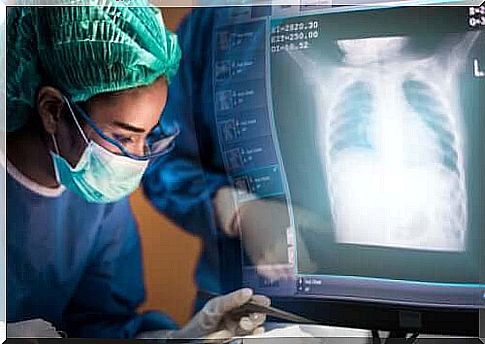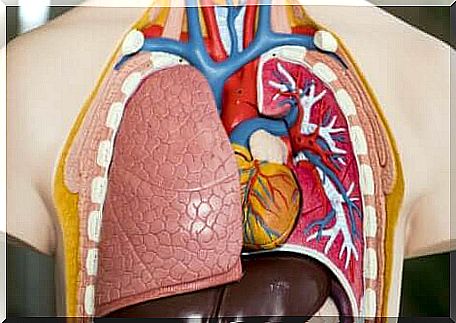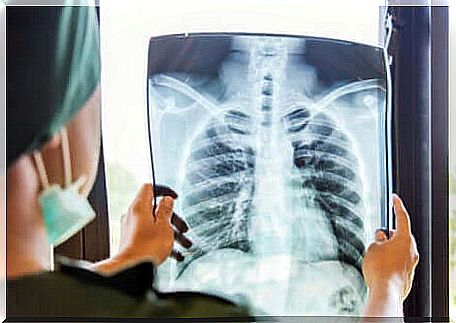Lung Transplant: Everything You Need To Know

Lung transplantation is a surgical procedure in which one or both of the diseased lungs are replaced by healthy ones provided by a deceased donor. It is a complex surgery that significantly improves a person’s quality of life.
The first successful lung transplants were performed in the 1960s by Dr. James Hardy and then by professional Denton A. Cooley in 1968. The initial patient was a two-month-old girl with congestive heart failure and recurrent pneumonia.
This type of procedure is performed when a person has a terminal lung disease or a serious condition that has proven resistant to conventional treatments. The lung transplant candidate must meet certain requirements to be chosen for the procedure.
Why is lung transplantation performed?
Normally, a lung transplant is only performed when all the treatments available to correct the lung failure have not produced results. This procedure is generally indicated for people under 75 years of age who have severe lung disease .
Some of the diseases that can lead to such a transplant are as follows:
- Chronic Obstructive Pulmonary Disease (COPD).
- Cystic fibrosis.
- Pulmonary hypertension.
- Pulmonary fibrosis.
- Bronchiectasis.
- Sarcoidosis.

Indications
Lung transplant candidates must meet certain requirements, as mentioned above. Only if they fulfill certain conditions will they be chosen for the procedure. Among the criteria that will be considered are the following:
- Age: it is established that the maximum must be 75 years, although over 55 is considered to be at higher risk.
- Body mass index: should not exceed 35.
- Risk of death: recommended for patients who have a 50% risk of death within the next two years if transplantation is not performed.
- High chance of survival after transplantation: based on your general health status.
- Commitment: the transplant recipient must make a commitment not to smoke again, not to use psychotropic drugs and to participate in a pulmonary rehabilitation program.
On the other hand, those who have an active infection are excluded, as well as those who have had cancer in the last two years or have a serious health problem in another organ. Likewise, those who are malnourished or who do not have a support network that guarantees adherence to post-transplant treatment are not chosen.
Risks of lung transplantation
Lung transplantation is a complex surgery and poses considerable risks. The most important are rejection and infection. The first occurs when the patient’s immune system attacks the transplanted lung or lungs.
So that this does not happen, anti-rejection medications are administered to the transplant patient, which can cause side effects, such as weight gain, stomach problems and facial hair growth.
These medications also make a person more prone to developing other illnesses such as diabetes, osteoporosis, kidney failure, and high blood pressure.
Therefore, after such a transplant, the patient must maintain strict hygiene measures and avoid contact with crowds or patients. Finally, another possible risk is the formation of blood clots after surgery, due to increased blood clotting.
How is the procedure?
The process of performing a lung transplant begins long before surgery. Once a patient has been evaluated and professionals are satisfied that he or she meets the requirements for the procedure, the next step is to join the waiting list until there is a donor.
While the transplant candidate awaits the donation, he/she must follow the medical indications regarding his/her lifestyle. When a lung is available for the procedure, patient compatibility is assessed. If adequate, then transplantation is performed.
Preparation
A person on a lung transplant waiting list should be prepared to respond to the call of physicians as soon as they occur. It’s best to have a suitcase packed with personal items and the medications you take regularly.
When the candidate arrives at the hospital, he undergoes a series of tests to verify compatibility. Your general health is also assessed. If there is any doubt about this, the procedure can be cancelled. If everything is in order, surgery will take place almost immediately.
Surgical intervention
For lung transplant surgery, general anesthesia is used. If a single lung is replaced, the intervention lasts between four and eight hours; if both lungs are transplanted, the procedure can take six to twelve hours.
The procedure to follow is as follows:
- First, an extracorporeal circulation system is activated.
- When only one lung must be replaced, a cut is made on the side of the chest. If they are both, the cut is made below the chest and on both sides.
- One or both of the lungs are removed and the blood vessels and airways of the new organs are attached to the patient’s body.
- Tubes are inserted to drain air, fluid and blood from the chest. These probes will be there for several days, until the new lungs expand normally.
- Once the lungs are functioning, the extracorporeal circulation system is removed.
Postoperative
The operated patient must remain in the hospital for a period of 7 to 21 days. The most common is that you stay several days in the intensive care unit (ICU) after surgery. However, each medical center has its own protocols.
The first 24 to 48 hours are crucial. During this period, professionals observe the patient meticulously to assess, mainly, the functioning of the lungs, heart, kidneys and their mental state. Likewise, it is verified that there is no bleeding or aggregated hemorrhage.

Recovery
The most common is that, in principle, the recovery period lasts for six months. During the first three, rigorous monitoring is carried out to assess the functioning of the lungs and prevent any complications.
In this first phase, it is necessary to go to the hospital frequently for tests that include radiographs, biopsies, laboratory tests and electrocardiograms. There is also a control of the reaction to medications.
After this phase, the patient must adapt his life to the new situation. This includes taking immunosuppressants and regularly attending therapy and consultations. The first year after lung transplantation is the most critical. Then all the risks start to diminish.
The most common is that there are weekly appointments during the first three months; then quarterly consultations for a year. Thereafter, an annual visit for the next 5 to 10 years.
What is the survival time after a lung transplant?
According to available data, the average life expectancy after a lung transplant is 5.8 years. This can vary depending on the person’s previous illness. Those with cystic fibrosis survive 8 or more years after surgery.
Patients with idiopathic interstitial pneumonia survive an average of 4.8 years. 32% of people who have undergone this procedure live 10 years or more.
However, the greatest risk of death occurs during the first 12 months; for this reason, it is necessary to reinforce medical controls during this period.









